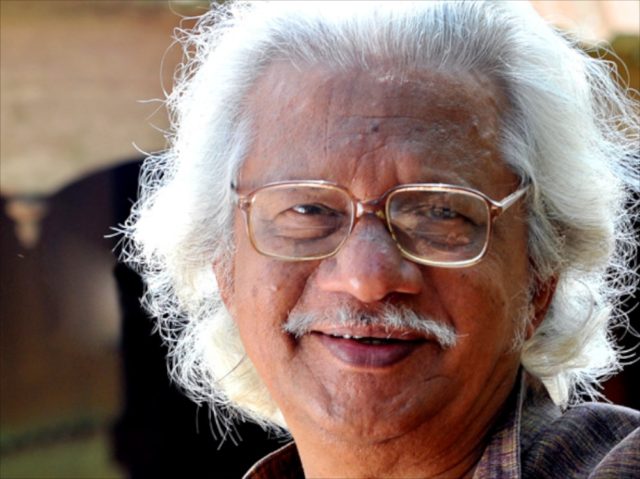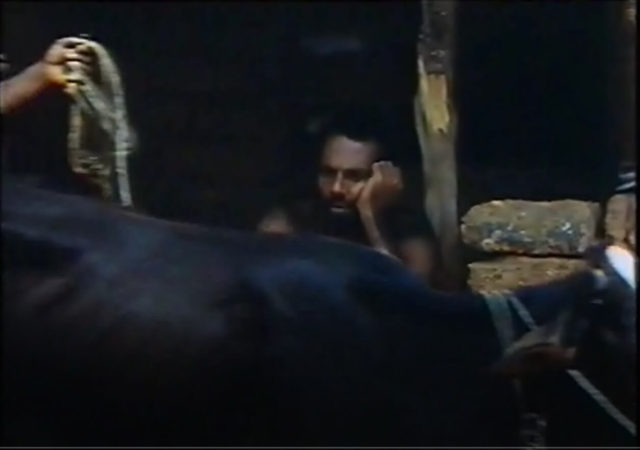By Matta Manjunath Abhishek
The person we are talking about is Adoor Gopalakrishnan!

Sorry to disappoint the ones who were expecting Karan Johar. (Are you serious? KJo?)
In a BBC TV interview, when Alfred Hitchcock was asked about the highly-famed opening sequence from his movie, Rear Window, where the establishment of the context and the characters is done without using a single dialogue, he replied saying, “Film is a visual medium, and I want to say things visually”.
One thinks of it, it seems like he basically stated the obvious, yet it is also the most non-frequent practice, not many film-makers can say things visually.
Nolan with a Halo
Talking of this, in 2010, a movie called Inception released, which expectedly took the box-office by storm given it’s directed by Nolan and starring Di Caprio (Yes, you guessed it right, he didn’t get an Oscar for this. Period) and also went onto garner Academy awards, entered Top-10 greatest Sci-fi films lists of ABC and The Hollywood Reporter and is one of the most precious plumes in Chris Nolan’s golden crest as we all know well.
Given this, almost sixteen years before this super-awesome movie of Nolan released a movie called Vidheyan in the language of Malayalam, which currently sits silently in the film archives waiting for a very limited audience to come and spare a few diligent glances at it. And I happened to spare my few diligent glances only recently, and accidentally.
Gourmet of Golden Glances
I saw the film in Malayalam, a language I do not know.
Yet such is the visual eloquence, the precision of sound engineering, the ability of the actors and actresses, the skill of editing that one can almost wholly understand the movie without any verbal assistance.
The point here is that the film functions not with the linguistics of Malayalam, but with linguistics of cinema and that’s exactly what’s lacking in the super-awesome Nolan film.
This Nolan’s film, like his most others, attempts to deal with so many representative levels that it has to lay out pages of dialogue for exposition of its plot, in fact at least three-quarters of the film, until the van begins to fall from the bridge, is devoted to explaining its plot, and you know if a film is using dialogue simply because the main plot and its most fundamentals has to explained, that its already on the back-step, that it has failed visually.
Given the fact that the character played by Page, for instance, was designed in such a way as to act as a proxy to assist the audience only handicaps the film’s visual literacy.
The Adoor Avatar and The Ta-Da Moment!
Whereas in Adoor’s film we see such exuberant detailing, in terms of framing and composition, for instance, in the opening shot of the film, we see a man sitting dhoti-clad (also note, it’s succeeding the image of the feudal lord’s chair) and we see or almost not-see a cow passing by in front of him which is tied and being pulled by a cattle-bearer.


And Ta da, there it is; the genius of this Indian film-maker, almost unnoticed.
This single shot is the symbolic foreshadowing to portray the slave-master relationship that we are about to discover now; this one shot of the cow, the cattle-bearer, and the dhoti-clad man was all it required for Adoor to critique the whole idea of Kerala feudalism and that’s what’s called a genius-act.
To me, these kinds of visuals are far more appealing than a movie’s that won an Oscar for visual effects, say.
I am talking of Nolan and Adoor because they, to me, are the exemplars of western and Indian cinema today, and there’s a clear distinction between them. And I want people to see this distinction.
TO SEE, BE NOT BLIND!
The intention here is not to claim that one film is better than the other, instead, it is to recognise a fact that was hidden, pushed into un-excavated pits, thrown away into an invisible abyss for decades now- the fact that Indian cinema can exist exclusively.
That we have our own cinematic considerations and vocabulary.
That we do not need the self-proclaimed first world and its holier-than-thou ideals of cinema dictating us.
That we do not necessarily have to follow the great Griffith or the unimpeachable Eisenstein or theorise like Andre Bazin or Hugo Munsterberg, and that we have our own Kasaravellis and Adoors and Manuchakravarthys.
We have an identity that we ought to recognise and acknowledge. The western cinema and its conditions are rising in India at the expense of our own works; the Nolan is granted a halo while Adoor is almost forgotten (whether the former deserves it or not is not the point of concern here).
And this is exactly why we all await the trailer of Dunkirk and not many know of Pinneyum (I can almost see the majority of you going into what-is-this-strange-word mode!).
This is only a call, a desperate cry-out to all the film lovers and otherwise, to recognise and gain back our identity, an absolutely undisturbed one, that identity which deserves our keen notice and that which requires it.
PS: Hope to meet you in the theaters for Pinneyum!
You May Also Like To Read:-
http://edtimes.in/2017/05/what-whatsapp-and-inception-have-in-common/

































